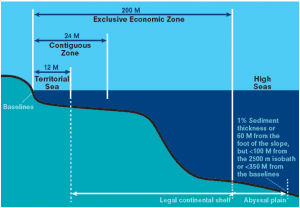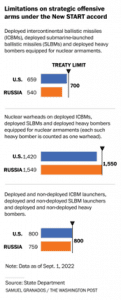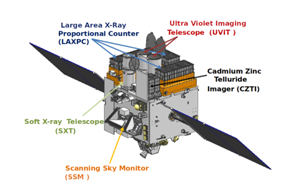THE CONTEXT: Recently, Pushpa Kamal Dahal “Prachanda” took the oath of office as prime minister of Nepal. It is thought that KP Sharma Oli, Deuba’s predecessor, was pro-China and that India will go back in time as a result of the alliance of Communist forces. India-Nepal relations had deteriorated under Oli’s administration from 2015 to 2016 and from 2018 to 2021, but they recovered once Deuba took office as prime minister in 2021. This article will analyse the challenges associated with India and Nepal ties and so far the history of India and Nepal ties and what role the China factor plays.
SIGNIFICANCE OF NEPAL FOR INDIA
- Uttarakhand, Uttar Pradesh, West Bengal, Sikkim, and Bihar are the five Indian states with which Nepal has a border. Consequently, a significant hub for commercial and cultural interchange.
There are two ways to look at the significance for India:
- Their strategic value for the national security of India.
- Their position in the perspective of India’s function in world politics.
- Nepal, along with Bhutan, serves as a northern “borderland” flank and functions as a buffer state against any potential assault from China. Nepal is located directly in the heart of India’s “Himalayan boundaries.”
- In terms of biodiversity and potential for hydropower, rivers that originate in Nepal feed the enduring river systems of India.
- Nepal is a popular pilgrimage destination for many Indians since it has a huge number of Hindu and Buddhist sacred sites.
HISTORICAL BACKGROUND
- The foundation of the unique ties that exist between India and Nepal is the India-Nepal Treaty of Peace and Friendship of 1950.
- Because of the geographical, historical, cultural, and economic ties that go back centuries, Nepal is a significant neighbour of India and holds a special place in its foreign policy.
- Given that Buddha was born in Lumbini, which is today’s Nepal, Hinduism and Buddhism have parallel ties to India and Nepal.
- The two nations have tight relationships through marriages and familial ties, colloquially known as Roti-Beti ka Rishta, in addition to sharing an open border and allowing unrestricted movement of people between them.
- India and Nepal’s relationship has experienced some “lows” recently.
- In 2015, the two nations’ ties deteriorated as a result of India’s involvement in the Constitution-drafting process as well as an “unofficial blockade” that caused considerable animosity toward India.
AREAS OF COOPERATION BETWEEN INDIA AND NEPAL:
THE ECONOMY AND TRADE:
- India is Nepal’s main trading partner, the major source of foreign investment, and the transit country for practically all of Nepal’s commerce with other nations.
- India can import affordable hydropower from Nepal to satisfy its peak electricity needs.
CONNECTIVITY:
- Since Nepal is a landlocked nation, India borders it on three sides, with one side open to Tibet, which has very little access to vehicles.
- India and Nepal have launched several connectivity initiatives to strengthen interpersonal connections and foster economic growth and development.
- For the construction of the electric rail route connecting Kathmandu with Raxaul in India, MOUs have been signed by the two governments.
- Within the framework of trade and transit agreements, India is attempting to create inland canals for the flow of freight, giving Nepal more access to the sea under the name “connecting Sagarmatha (Mt. Everest) with Sagar” (Indian Ocean).
DEFENCE COLLABORATION:
- Through the provision of equipment and training, bilateral defence cooperation helps the Nepalese Army modernise.
- The Indian Army’s Gorkha Regiments are partially staffed via recruiting in Nepal’s hill areas.
- Since 2011, India and Nepal have participated in a joint military exercise called Surya Kiran.
CULTURAL:
- Initiatives have been made to encourage interpersonal interactions between various local organisations in Nepal in the fields of media, academia, and art & culture.
- Three sister-city agreements between Kathmandu and Varanasi, Lumbini and Bodhgaya, and Janakpur and Ayodhya have been inked by India.
PROVIDING HUMANITARIAN AID:
- Due to its location in a delicate ecological zone where earthquakes and floods can cause significant harm to property and human life, Nepal continues to be India’s top beneficiary of humanitarian aid.
MULTILATERAL COLLABORATION:
- The Bay of Bengal Initiative for Multi-Sectoral Technical and Economic Cooperation (BIMSTEC), the Non-Aligned Movement, and the South Asian Association for Regional Cooperation is just a few of the multilateral forums that India and Nepal are members of together.
HUMAN-TO-TO INTERACTIONS:
- There are approximately 6,000 Indian citizens residing in Nepal. These people include established businesspeople and traders, professionals (doctors, engineers, and IT workers), and labourers (including seasonal and migrant workers in the construction industry).
- The Indian Army employs numerous Nepalis.
HOW MUCH OF AN INFLUENCE HAS CHINA HAD ON NEPAL?
- As Beijing desires to have a Communist-run government in Kathmandu, China is thought to have played a significant role in uniting the two communist parties throughout the 2018–2021 era.
- China has gradually displaced India’s influence over Nepal in recent years by making investments, providing help, and making loans.
- As part of its broad aspirations to increase international trade, China views Nepal as a crucial partner in its Belt and Road Initiative (BRI) and wants to invest in Nepal’s infrastructure.
- In the initial years, from the 1950s to 1980s, the Chinese tried to build an economic presence in Nepal, which got enhanced tremendously post-1990s.
- China has made inroads into Nepal in infrastructure, education and health sectors and has increased participation with Nepal on the economic front.
BELT AND ROAD INITIATIVE(BRI) AND MILLENNIUM CHALLENGE CORPORATION(MCC)
- China’s Belt and Road Initiative is gaining momentum in Nepal and the region despite India’s resistance and non-membership in it. But the future of the recent China-Nepal agreements will depend on Nepal’s foreign policy dexterity.
- China considers Nepal an important element in its growing South Asian footprint with Nepal being a key partner in its Belt and Road Initiative (BRI).
- In 2016, Nepal negotiated an Agreement on Transit Transportation with China and in 2017, China provided a military grant of $32 million to Nepal.
- In 2019, a Protocol was concluded with China providing access to four seaports and three land ports to Nepal. China is also engaged with airport expansion projects at Pokhara and Lumbini.
- China has overtaken India as the largest source of foreign direct investment with the annual development assistance being worth $120 million.
- The PM of Nepal pushed for the ratification of the Pancheshwar Multipurpose project with the U.S. Millennium Challenge Corporation (MCC) which saw street protests and big-time.
THE CAUSES OF NEPAL’S ENLARGING RELATIONSHIP WITH CHINA
IDEOLOGICAL FOUNDATION:
- In Nepal, the communist parties have constantly supported and campaigned against India. This time, they were also favoured by the Nepali Congress.
INDIA’s DELAYS IN NUMEROUS PROJECTS:
- More so than China, which is carrying out the projects that were agreed upon, India’s delays in implementing numerous projects in Nepal.
- For instance, the Mahakali Agreement has not been implemented for more than 20 years.
POTENTIAL ADVANTAGE OF CHINA:
- Nepal sees the Chinese railway as a chance to attract Chinese tourists and pilgrims to Lumbini, the site of Buddha’s birth.
INDIAN POLICY MISTAKES:
- In Kathmandu, New Delhi has traditionally been seen as “hawkish” and “selfish” when handling delicate issues.
- The most notable examples of this are various river treaties, the unwillingness to respond to frequent border-encroachment complaints, the construction of tall structures along the border, complaints about flooding, the harsh behaviour of the armed border forces, trade and transit crises, and embargoes.
PEOPLE’s SCEPTICISM ABOUT INDIA:
- Open borders have historically been a major point of controversy.
- Nepal’s excessive reliance on India has prevented it from ever gaining the comparative advantage necessary to boost exports. unable to compete with the influx of inexpensive Indian products.
HOW CHINA IS FIGHTING AGAINST GEOGRAPHY FOR NEPAL?
The Himalayan mountains have historically been a barrier between Nepal and China, but railways, roads and tunnels are about to change that. In the battle between geography and technology, Nepal will fall into the Chinese embrace if technology wins. If geography remains a factor, however, India can continue to wield political, strategic and geopolitical influence on Nepal. The idea of political geography will come into play around the trilateral relations between China, India and Nepal.
The rising presence of China across the Himalayas, especially after the BRI, forced India to recalibrate its policy towards Nepal.
- From a strategic perspective, the Kalapani territorial conflict involving China, Nepal, and India causes the tension. India governs the Kalapani region.
- In the event of a Sino-Indian battle, control of the Kalapani trijunction would allow India to station itself at a strategically advantageous elevation and allow Indian posts to monitor the Tibetan highland passes.
- The 2017 India-China military standoff in Doklam, during which Chinese authorities claimed that the People’s Liberation Army (PLA) of China could easily invade India through other border intersections like Kalapani or Kashmir, proved the validity of this argument.
- China’s influence in Kathmandu has grown recently as a result of the National Communist Party (NCP) taking power in Nepal.
- Growing Chinese investments in physical infrastructure, such as the trans-Himalayan railroads, as well as Nepal’s participation in the Belt and Road Initiative (BRI), among other indicators, testify to Beijing’s expanding economic sway.
- The India-Nepal relationship, on the other hand, has frequently encountered issues over the past ten years, despite the two countries’ long history of bilateral ties. For instance, as a landlocked nation, Nepal relies heavily on India for supplies of necessities.
- Further undermining bilateral trust was the reported “unofficial blockade” of 2015 that resulted in the interruption of vital fuel supply during the Madhesi protests in Nepal. As a result of this episode, Kathmandu strengthened its alternative to India and increased its inclination towards China.
ISSUES ASSOCIATED WITH INDIA AND NEPAL TIES
TERRITORIAL CONFLICTS
- Even though 98% of the border between India and Nepal has been marked, the Susta and Kalapani limits remain a concern.
- The British established these limits in 1816, and when the British withdrew from India in 1947, India inherited these territories.
- In 2019, Nepal published a new political map that included the Uttarakhand regions of Kalapani, Limpiyadhura, and Lipulekh as well as the Bihar region of Susta.
PROBLEMS WITH FRIENDSHIP AND PEACE
- The Nepali government requested the Treaty of Peace and Friendship, 1950 in 1949 to maintain its unique relations with British India and grant them an open border and the ability to work in India.
- Today, however, it is seen as a manifestation of an unequal relationship imposed by Indians.
THE IRRITANT OF DEMONITISATION
- India removed its (Rs 1,000 and Rs 500) banknotes in November 2016.
- Given that the Nepali and Indian rupees are tied, many Nepali people who were legally permitted to possess Rs 25,000 in Indian money were caught in a bind.
- The central bank of Nepal, the Nepal Rastra Bank, has assets at Rs 7 crore, while the estimated value of public holdings is Rs 500 crore.
- One of the factors contributing to the growing animosity between the two nations is India’s unwillingness to accept demonetized currencies at the Nepal Rastra Bank.
CHINA’S GROWING INTERVENTION
- India’s influence over Nepal has waned in recent years, and China has increasingly filled the void with investments, loans, and other forms of assistance.
- As part of its broad aspirations to increase international trade, China views Nepal as a crucial partner in its Belt and Road Initiative (BRI) and wants to invest in Nepal’s infrastructure.
CONCERN FOR INTERNAL SECURITY
- The border between India and Nepal is essentially unguarded and is used by terrorist organisations and rebel groups from India’s North East to supply trained cadres, traffic people, and print counterfeit money.
ETHNIC DIFFERENCES AND TRUST
- Due to India’s reputation for putting off the delivery of major projects, the trust gap between India and Nepal has grown.
- Some ethnic groups in Nepal harbour animosity toward India because they believe that India interferes with their political independence and shows excessive courtesy to them.
HOW CAN INDIA SETTLE ITS DISPUTES WITH NEPAL?:
THE WAY FORWARD:
- Today, it is important to steer clear of territorial nationalism rhetoric and set the stage for a peaceful conversation in which both parties show compassion as they consider what is practical. India must be a considerate and giving partner for the neighbourhood first policy to take hold.
- In terms of interpersonal relationships, administrative cooperation, and political exchanges, India should be more proactive with Nepal.
- Nepal needs to pay more attention to the Bilateral Investment Promotion and Protection Agreement (BIPPA) that was signed between India and Nepal.
- India must engage with and forge strong relationships with all Nepal political actors, whether on the left, right, or centre.
- Given its location, it makes sense that Nepal would look to both China and India for infrastructural investment. India needs to be aggressive and show Nepal that its projects are more appropriate for the Himalayan country than Chinese ones.
- In the past, numerous Indian projects were hampered by delays brought on by local environmental concerns, cost overruns, and the use of subpar local contractors. India should therefore assist Nepal in resolving these issues so that major infrastructure projects like the Arun III hydroelectric project can be completed on time.
- Furthermore, India ought to keep its political ties strong in order to prevent disagreements like the one over land in the Kalapani region.
UPSC MAINS EXAMINATION QUESTIONS:
Q1. A stable, safe, and friendly Nepal is a requirement that India can’t afford to ignore, given its enormous strategic value in the Indian context as an Indian security concern. Discuss.
Q2. Due to China’s expanding influence in Nepal, India will need to step up its diplomacy and project delivery. Discuss
Q3. “The relationship between India and Nepal has recently deteriorated and needs to be improved”.Critically examine.
UPSC PRELIMS PYQ:
Q. Consider the following pairs:
Community sometimes mentioned in the news In the affairs of
1. Kurd — Bangladesh
2. Madhesi — Nepal
3. Rohingya — Myanmar
Which of the pairs given above is/are correctly matched?
a) 1 and 2
b) 2 only
c) 2 and 3
d) 3 only
Answer: C




